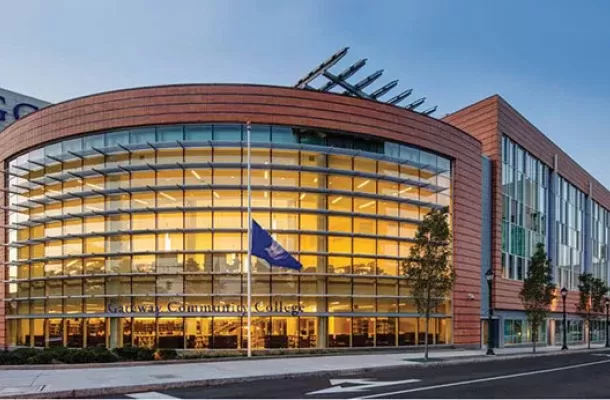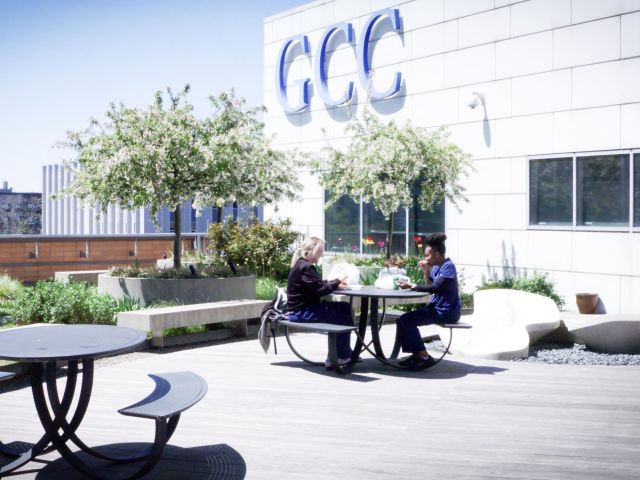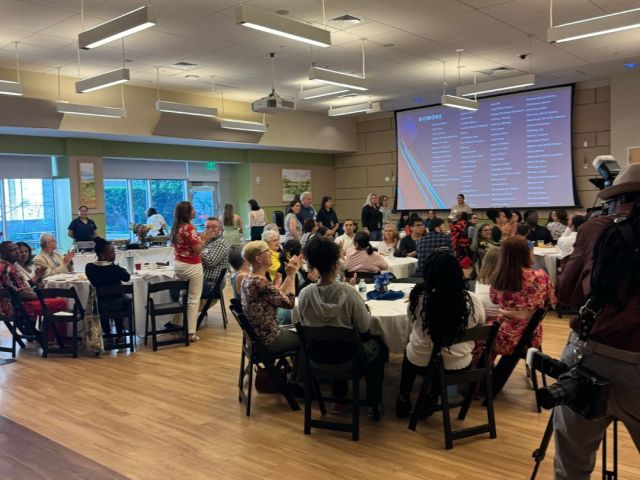News Center
Bringing you the latest news and events from Gateway Community College.
GCC Engineering Students Develop Projects that Provide Real-World Solutions to Industry Problems
Share
Five Gateway Community College (GCC) engineering students took part in the Life Support and Sustainable Living Program where people from industries and local organizations including NASA, GE, the Connecticut Children’s Hospital, Hamilton Sunstrand and Pratt and Whitney propose a problem that they need to have addressed. Student teams from the Connecticut State College system then set off to engineer and design a product to solve that problem. For their challenge, the GCC students designed a solo transfer wheelchair, an unmanned aerial vehicle (UAV) and a non-profit smartphone app.
The students were Elizabeth Amado, Joseph Ancona, Kristopher Balisciano, Jonathan Carothers and William Sennett, along with GCC graduate Sean Belleau, now a student at the University of New Haven. It was the largest contingent of Gateway students ever participating, said Paul Silberquit, the division director of GCC’s Engineering and Applied Technologies.
Carothers called it one of the best experiences of his life. His team’s project was the solo transfer wheelchair. His was actually the fourth group of engineering students to work on the project and their charge was to take that design to the next level. Currently, one way severely physically incapacitated people are moved from a wheelchair to a bed is with the use of a sling apparatus that requires two people to operate. “This chair would cut down on the number of health care workers who strain their backs or shoulders lifting people from bed to a wheelchair,” he said.
Carothers said he found the project inspiring. He said he learned a great deal from his team members and faculty and industry advisors. He enjoyed putting in the many extra hours beyond his regular course work in manufacturing engineering for such an important project.
“I’m very creative,” he said. “I like putting things together, not just for aesthetics but for purpose and usefulness. This is very cool because you get to be creative for a purpose and you can invent something that is actually going to change people’s lives.”
Amado, who is part of the GCC general engineering pathway program, worked on a team that focused on recovering lost energy. They designed a prototype using a sterling engine, magnets and coil to generate current. She said the project taught her how to manage a team to get a major project done effectively and on time. “It is important because you get experience that you can't get in class,” she said. “You also learn how to do research on your own.”
In the past, students have worked on space suit applications for NASA and developed a monitoring device to detect sleep apnea in premature infants for the Connecticut Children’s Hospital.
But before they even get to any of the engineering, the students take part in a two-week winter intercession program in leadership training. They work on leadership, team building, how to deal with difficult people or challenges in group situations and how to write a resume that garners attention.
“In addition to tackling real-world engineering challenges, they also develop their ability to sell themselves career-wise,” said Eric Flynn, GCC’s program coordinator of Electrical Engineering Technology, who mentored teams on two different projects this year, one NASA-related and another team that was developing the non-profit smartphone app. “To be able to mentor these engineering students, who share many of the same goals I did as a student is a fulfilling experience.”
“ During the semester, the students are responsible to hold meetings, often on a weekly basis. This could even be on Saturdays, extending the normal work week to fit the LSSL projects in,” he said. “Gateway’s campus quickly became a centerpoint for many of the team meetings due to the state-of-the-art facilities, from the hi-tech classrooms to the engineering labs. Our 3D printer was crucial for student projects.”
The award-winning program was designed by John Birch , president of The Birch Group LLC in Farmington, in collaboration with The Connecticut College of Technology, a statewide initiative that provides career pathways for students to earn certificates, associate and bachelor degrees in engineering and technology. Each student receives a one-year subscription to SolidWorks, 3D software tools that allows them to create, simulate, publish, and manage their data.
Half of the students come from universities in the state and the other half come from the state’s 12 community colleges and the groups are mixed. “The students work very effectively with each other and they teach each other,” Birch said. “One of the things I am most proud of is that except for two students, all of our community college students have gone on to matriculate at four-year universities.”
It is a very active pipeline to jobs in the engineering field, said Birch. Many of the students in the program are recruited by companies in the state and hired even as they are graduating. “Firms hone in on experience they’ve gained from being part of the program,” he said.






